
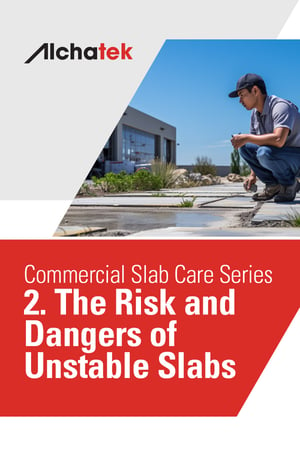 In the previous post, the basics of slab leveling, and soil stabilization were introduced, along with a discussion on the types of commercial properties commonly affected by these issues. Today's focus will be on delving deeper into the specific risks and dangers that different industries face when it comes to sinking slabs and unstable soil.
In the previous post, the basics of slab leveling, and soil stabilization were introduced, along with a discussion on the types of commercial properties commonly affected by these issues. Today's focus will be on delving deeper into the specific risks and dangers that different industries face when it comes to sinking slabs and unstable soil.
Warehouses and Manufacturing Plants
Risks
- Damage to Inventory: Sinking slabs can lead to uneven floors, causing racks to tilt and possibly collapse, damaging the stored goods.
- Machinery Misalignment: Production lines and heavy machinery require level surfaces for optimal operation. A sinking slab can lead to misalignment, affecting production quality and efficiency.
- Operational Delays: Uneven surfaces can slow down the movement of goods within the warehouse, leading to delays and increased operational costs.
Dangers
- Forklift Accidents: Uneven floors can cause forklifts to tip over, leading to potential injuries and damage to goods.
- Employee Safety: Trip hazards due to uneven floors can result in falls, leading to injuries and potential workers' compensation claims.
Retail Centers and Public Spaces
Risks
- Damage to Store Fixtures: Sinking slabs can lead to tilted shelves and display units, causing merchandise to fall and get damaged.
- Reputation: The appearance of cracked or uneven floors can deter customers, affecting foot traffic and sales.
- Legal Liability: If a customer trips and falls due to an uneven surface, the property owner could be held liable for injuries.
Dangers
- Customer Safety: Trip and fall hazards can result in injuries to customers, leading to potential lawsuits and a tarnished reputation.
- Employee Well-being: Staff members are also at risk of tripping over uneven surfaces, which can lead to injuries and absenteeism.
Healthcare and Educational Institutions
Risks
- Equipment Misalignment: In healthcare settings, specialized medical equipment like MRI machines and surgical tables require level surfaces for accurate operation. Sinking slabs can lead to misalignment, affecting patient care.
- Facility Damage: Lecture halls, classrooms, and laboratories in educational institutions can suffer from structural damage, affecting the quality of education.
- Operational Disruption: Both healthcare and educational facilities are places where timely service is crucial. Structural issues can lead to room closures and service interruptions.
Dangers
- Patient and Student Safety: Trip hazards can be especially problematic in healthcare settings, where patients may already be in a vulnerable state. In educational institutions, the safety of young students is a primary concern.
- Emergency Response: In healthcare settings, uneven floors can impede the quick movement of medical staff during emergencies, potentially affecting patient outcomes.
If you recognize your industry in this list and have not yet assessed the state of your property's slabs and soil, it's time to consult with professionals. Specialized contractors can provide industry-specific solutions to mitigate these risks and dangers effectively.




 If you own or manage a commercial property, you've likely heard the terms "slab leveling" and "soil stabilization." But what do these terms mean, and why should you care? This blog post aims to demystify these critical processes and shed light on their importance for maintaining the structural integrity and safety of your property.
If you own or manage a commercial property, you've likely heard the terms "slab leveling" and "soil stabilization." But what do these terms mean, and why should you care? This blog post aims to demystify these critical processes and shed light on their importance for maintaining the structural integrity and safety of your property.
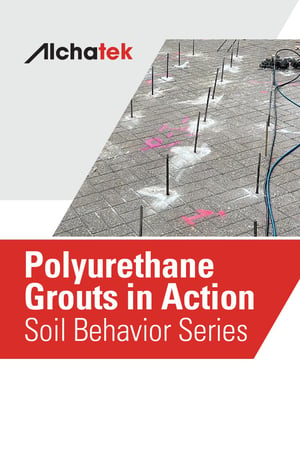 The field of geotechnical engineering is one filled with both uncertainties and innovations. At the intersection of theory and practice, polyurethane grouts have showcased their prowess in not only addressing challenges but also in revolutionizing soil stabilization techniques. Today, let's explore three real-world scenarios where polyurethane grouts stood as the unsung heroes.
The field of geotechnical engineering is one filled with both uncertainties and innovations. At the intersection of theory and practice, polyurethane grouts have showcased their prowess in not only addressing challenges but also in revolutionizing soil stabilization techniques. Today, let's explore three real-world scenarios where polyurethane grouts stood as the unsung heroes.
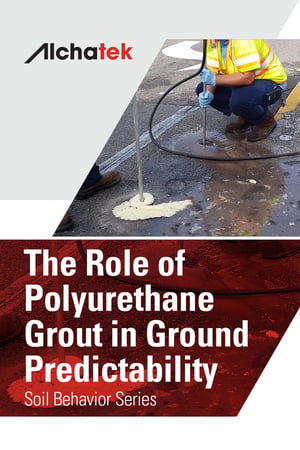 In the complex field of geotechnical engineering, understanding the behavior of the ground is a challenging but essential task. One effective tool for soil stabilization and ground treatment is the use of polyurethane grouts. This article discusses how polyurethane grouts have become a valuable tool for enhancing soil predictability and addressing various geotechnical challenges.
In the complex field of geotechnical engineering, understanding the behavior of the ground is a challenging but essential task. One effective tool for soil stabilization and ground treatment is the use of polyurethane grouts. This article discusses how polyurethane grouts have become a valuable tool for enhancing soil predictability and addressing various geotechnical challenges.
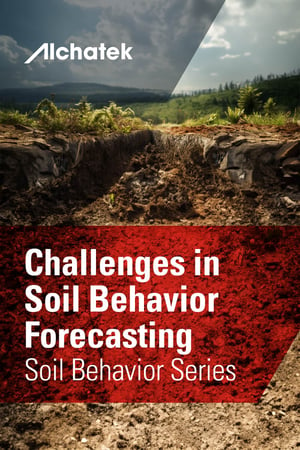 Every structure, from the smallest building to the grandest bridge, rests upon a complex substrate known as soil. However, the interplay of factors affecting soil behavior has made it a tricky entity to predict. This unpredictability poses significant challenges to engineers, architects, and environmentalists. The current discourse seeks to uncover the intricacies behind the daunting task of soil behavior forecasting, shedding light on the myriad of influences and their profound implications.
Every structure, from the smallest building to the grandest bridge, rests upon a complex substrate known as soil. However, the interplay of factors affecting soil behavior has made it a tricky entity to predict. This unpredictability poses significant challenges to engineers, architects, and environmentalists. The current discourse seeks to uncover the intricacies behind the daunting task of soil behavior forecasting, shedding light on the myriad of influences and their profound implications.
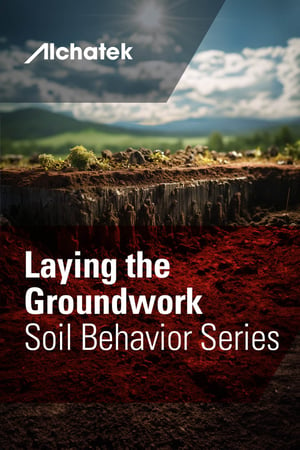 Soil, in its seemingly simplistic form, conceals a vast universe of complexity beneath its surface. As the very bedrock upon which humanity has built civilizations, its importance cannot be understated. This foundation of every structure holds secrets, each granule and layer telling tales of time, pressure, and the ever-evolving processes of Earth.
Soil, in its seemingly simplistic form, conceals a vast universe of complexity beneath its surface. As the very bedrock upon which humanity has built civilizations, its importance cannot be understated. This foundation of every structure holds secrets, each granule and layer telling tales of time, pressure, and the ever-evolving processes of Earth.
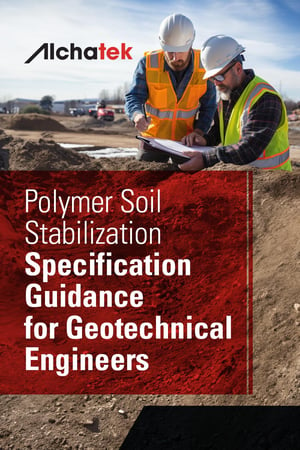 Unstable soils present significant challenges in civil engineering projects. Whether caused by erosion, improper compaction, freeze-thaw action, or decay of buried organic matter, loose and shifting soils undermine structural integrity. Together, these mechanisms prevent soil from remaining firmly in place. This necessitates methods to stabilize and strengthen the matrix. Geotechnical engineers must find solutions to reinforce the substrate and restore load-bearing capacity.
Unstable soils present significant challenges in civil engineering projects. Whether caused by erosion, improper compaction, freeze-thaw action, or decay of buried organic matter, loose and shifting soils undermine structural integrity. Together, these mechanisms prevent soil from remaining firmly in place. This necessitates methods to stabilize and strengthen the matrix. Geotechnical engineers must find solutions to reinforce the substrate and restore load-bearing capacity.

 Polyurethane grouting is an essential process in construction and infrastructure projects with the need to lift structures, fill voids, and stabilize soil. While polyurethane grouting has been utilized for decades, advancements in technology and technique have enabled a new level of precision and control in modern grouting applications. Innovations in polyurethane injection methods and equipment allow design and construction teams to achieve highly accurate, consistent injections for maximum strength and longevity.
Polyurethane grouting is an essential process in construction and infrastructure projects with the need to lift structures, fill voids, and stabilize soil. While polyurethane grouting has been utilized for decades, advancements in technology and technique have enabled a new level of precision and control in modern grouting applications. Innovations in polyurethane injection methods and equipment allow design and construction teams to achieve highly accurate, consistent injections for maximum strength and longevity.
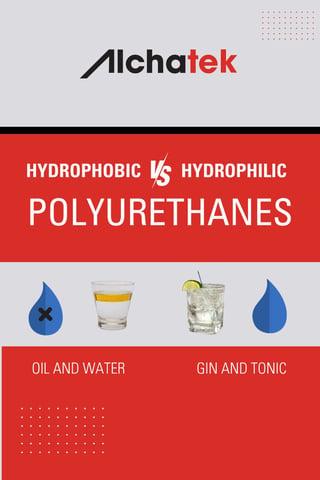 Hydrophobic polyurethanes naturally repel water (similar to the way oil would repel water and stay separate if you were trying to mix them in a glass). These products push water out of the area in question as they expand. Hydrophobics are used with catalysts which allow you to adjust the set time. They also have zero shrinkage after curing.
Hydrophobic polyurethanes naturally repel water (similar to the way oil would repel water and stay separate if you were trying to mix them in a glass). These products push water out of the area in question as they expand. Hydrophobics are used with catalysts which allow you to adjust the set time. They also have zero shrinkage after curing.


 When the residue of plants or animals is converted into soil, the process is known as decomposition. Bacteria, fungi, and worms break down this residue, taking nutrients from them and leaving the remaining portion. Organic molecules are broken down into simpler inorganic molecules. This biological process changes the makeup of the soil and can therefore lead to soil instability.
When the residue of plants or animals is converted into soil, the process is known as decomposition. Bacteria, fungi, and worms break down this residue, taking nutrients from them and leaving the remaining portion. Organic molecules are broken down into simpler inorganic molecules. This biological process changes the makeup of the soil and can therefore lead to soil instability.